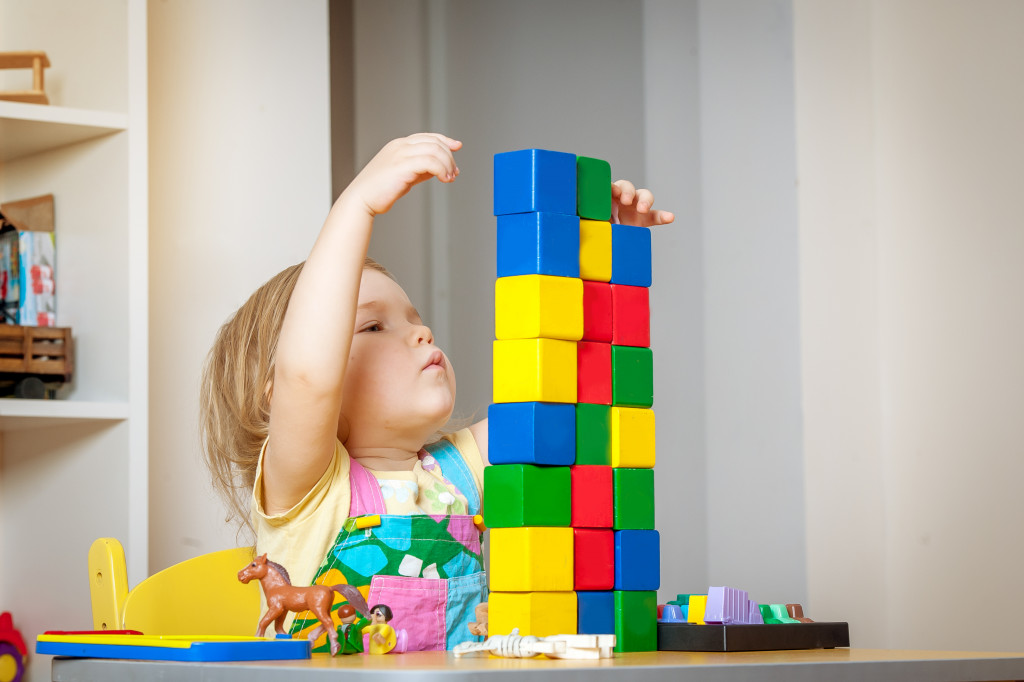The United Nations Convention on the Rights of the Child includes the child’s fundamental right to play. According to Bright Horizons, the National Association for the Education of Young Children (NAEYC) considers playing a central part in developmentally appropriate teaching practices. Bright Horizons believes play to be the main vehicle for optimal childhood growth. On the other hand, children who are not given opportunities to play can have their development significantly impaired.
What Children Learn at Play
According to the American Psychological Association (APA), play develops cognitive, social, communication, emotional, and physical skills in ways that cannot be achieved through other ways of teaching, including worksheets and screen time. Children have the instinct to play as a way of trying to understand the world.
Different types of play are all necessary for the child. Active play that involves physical exertion like running, jumping rope, climbing, and swinging from a bar build healthy and sturdy bodies and release excess energy. These also lay down the foundation for an active lifestyle and prevent future obesity.
Challenging games that involve some risk, like hide-and-seek, develop decision-making, risk calibration, mental flexibility, problem-solving, emotional management, and grit. It helps children make connections between the choices they make and their consequences and accept this.
Creative play, such as making up stories, creating art, and playing on musical instruments their own way builds on their creativity, confidence, and self-esteem. Play-acting enables them to inhabit different identities.
Unstructured play is also essential to child development. It enables the child to explore and engage with the environment and make sense of it by testing new ideas. These experiments enable the child to connect and compare previous experiences with current investigations. Sometimes they use objects in ways that are not usually done, like turning pots and pans into drums. Parents must not interfere with such experiments unless they are unsafe.
Parents and other family members should join the child in unstructured play, encouraging while letting the child take the lead. This nurtures their relationship and strengthens their bond. Such positive attention also makes the child feel loved and accepted.
Play relieves children’s stress and anxiety. This is especially important in times of crisis, like the pandemic. Adults may not realize that children feel the stress of their parents and mirror this in themselves. Play distracts the child from stress, and anxiety replaces these with joy. When the parents join the child, the child also feels that the parents are no longer stressed and anxious.
Play with other children is also vital. The child learns connection and acceptance, empathy, sharing and reciprocity, cooperation and collaboration, negotiating with others, delayed gratification, and self-control. This is why it is important for children who have no siblings to playgroups even before school age.
A child must also have the opportunity to play alone. This enables the child to become fully immersed in a task, developing mindfulness, focus, and concentration.
Choosing Developmental Toys

There was a time when toys were segregated into those meant for boys, those meant for girls, and those that both genders can play with. In today’s inclusive world, parents must not impose such differences. A little boy can play with dolls and a dollhouse and build on the family relationships and values he experiences in his own family. A little girl can play with robots and develop an interest in robotics and information technology (IT). Parents must consider all toys as gender-neutral.
While a child can turn anything in the household into a toy, it is also beneficial to provide toys that stimulate intellectual development based on a child’s age. For instance, the classic building blocks with letters of the alphabet are particularly useful in developing a toddler’s motor skills while also introducing the alphabet, how letters sound, and even making simple words.
When a child grows older, sturdy life-size construction set toys can enable them to build their own furniture, playground sets, and various types of toys on wheels. This helps them learn the basics of engineering concepts. It also gives their self-confidence a huge boost when they can use the things they made.
At school age, the child will be introduced to computers. This is a necessity in today’s world, as the pandemic has shown. Parents must regulate screen time, though, and the type of activities the child engages in digitally. Apart from schoolwork, it would be best to look for games that teach the foundations of programming. Children must learn this alongside writing, reading, and mathematics. It will give them a solid foundation in their studies even if they do not go into the information technology (IT) industry.
Play is a Serious Need
Parents must take the child’s need for play seriously and provide opportunities for different types of play. They must also be extra careful in choosing the best kinds of toys for their child.